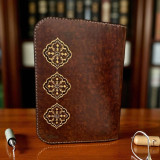Silver Jewelry Production Process,Nepali silver accessories
Silver is graded by its fineness. There are basically two grades of silver, 999 and 925. 999 is termed fine silver, as, at 99.9% silver, it is as pure as it gets. This is the silver used for bullion bars and investment. Being too soft for most practical purposes, it is made into an alloy. The result is called sterling silver, or 925 silver, as it is 92.5% pure silver and 7.5% other metals such as copper. The alloy actually enhances the properties of the silver, making it more durable while leaving it ductile. 925 sterling silver is the standard used for making silverware and silver jewelry. When fine silver is used in jewelry manufacture, such as in hilltribe silver, the solder used forms an alloy with the silver, so the finished product may be between 95% and 99% pure, but it is still classified as fine silver.
Silver Molds
Once the jewelry craftsman has the silver, the next step requires a design and a primary object from which to make a mold. The mold is then cast so it can be filled with molten silver to produce the finished item.
There are two methods of casting, investment casting and die casting.
Investment Casting
Investment casting is also called lost wax casting, and it started evolving in the Middle East some 4,000 years ago. First a wax model is covered in plaster (the 'investment' material) then heated in a furnace until the wax melts and can be poured out or 'lost'. The mold is then filled with molten silver, allowed to cool, and the mold broken off to leave the silver object. This is the original method of casting, still preferred today.
Die Casting
Die casting, or the die struck method, is a much more recent method of casting, dating from around the time of the Industrial Revolution. This process involves forcing the molten silver into a metal die using compressed air until the metal solidifies and cools. Die casting produces items of better dimensional accuracy and a superior surface finish.
Die Stamping
Die stamping is a production method that involves stamping a sheet of silver with a die to produce cut-out pieces that can be made into lightweight accessories such as earrings. The dies are relatively expensive to make, so this process is used for mass-producing pieces such as coins.
Electroforming
This is a more recent innovation that allows for the production of complex, hollow, three-dimensional shapes that would be difficult if not impossible to realize by other methods. The process requires specialized equipment, but the resulting product can be, for example, an intricate, lifelike flower or fern with perfect contours and immaculate finish. Not to be confused with electroplating, though the end product is something like an electroplate with the core metal removed. An early example of electroforming is the crown made for England's Prince Charles in 1969.
Strictly speaking, in silver jewelry production none of the above methods qualifies as handmade (though investment casting is not too far removed) but the production of silver jewelry is a meticulous process, requiring multiple skills from the design concept right through to the polishing and setting of the finished item.
Recent Posts
-
The Benefits of Journaling with Leather Covers + A Guide to Caring for Camel Leather
In today’s fast-paced world, journaling has become a timeless ritual—a way to pause, reflect, and re …14th Sep 2025 -
Handwoven Palm Leaf Baskets & Bags: Timeless UAE Handicrafts at Craftihouse
In a world of mass-produced goods, nothing compares to the charm of handmade craftsmanship. At Craft …13th Sep 2025 -
From Logo to Legacy: Customized Corporate Gifts that Leave a Lasting Impression in the UAE
In today’s competitive business world, corporate gifting is more than just a tradition — it’s a powe …10th Sep 2025



